► CROWN WARS: THE BLACK PRINCE (CW: TBP) combines the fairly unique SETTING of The One Hundred Years war with a dark fantasy theme of the occult. They bind together an interesting STORY with strategic and tactical elements that set it apart from other turn-based tactical (TBT) strategy games.
► Play takes place on a WORLD MAP, a historical representation of the territory where the Hundred Years War took place. The map is filled with tokens representing story-driven missions and supporting quests, which pop up and disappear with regular vigour throughout the game. Only a limited number of squads can be sent out to fight encounters. It is possible to send out parties whose journey time will take them past the expiry date.
With so many supporting battles, the player can dictate how ready and prepared they want their parties to be which contributes to the length of a game. Once sent, squads cannot be recalled even if sent out in error. A combination of time constraints and a lack of extra reward kills any incentive to attempt side quests further away from the base of operations
► The actual CAMPAIGN would be short if only story missions were counted, despite taking place over five acts. Gameplay is puffed out with filler battles required for the resources to build up the infrastructure of the castle, the soldiers under the player’s command and consumables needed to give an edge in battles.
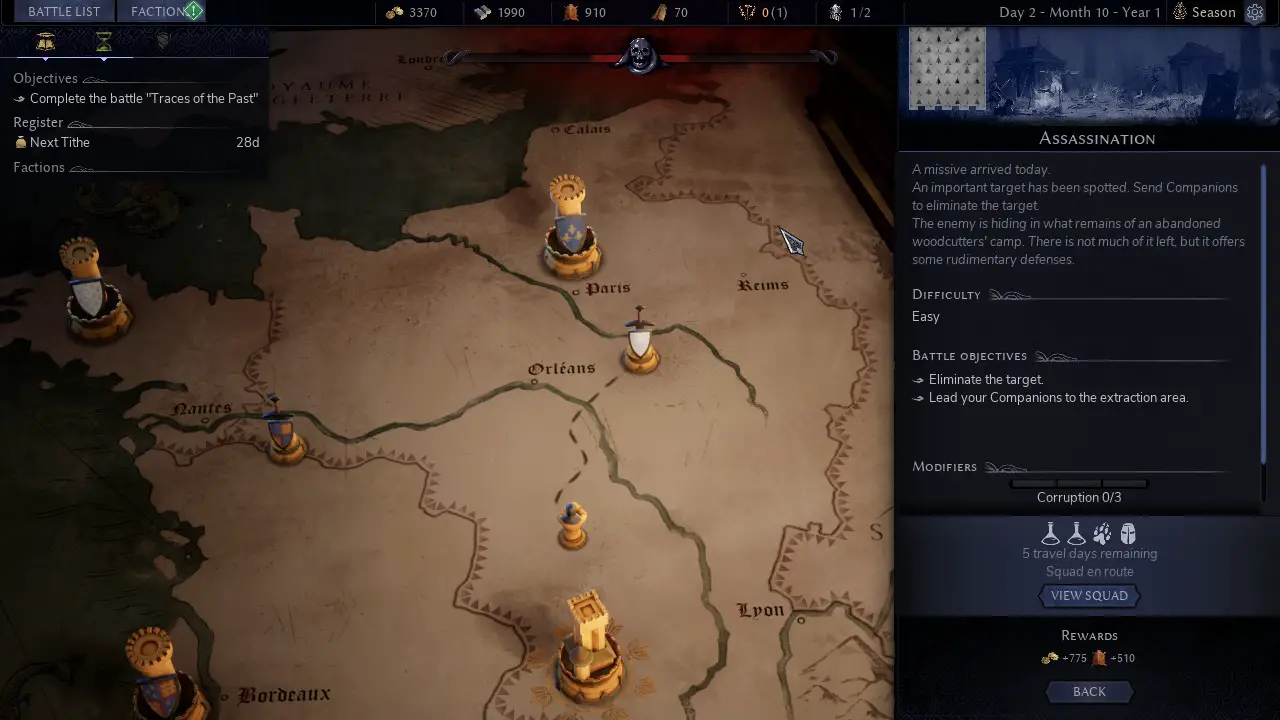
STRATEGY
► The HUB/CASTLE (base of operations) is the focal point of support needed to beat the game. It provides an uncomplicated strategy layer that doesn’t detract from the TBT combat and remains relevant throughout the campaign. Upgrading individual buildings is open to player choice and becomes essential due to requirements in later missions. Its ability to unlock consumables and research better equipment while providing passive bonuses, training, and recuperative services is fairly standard. The strategic bonuses given to stats and income from prisoners are a particular highlight. So, they are being sold for a quick boost in coins.
► CHARACTERS are limited to set classes. Starting off pretty lame, it is only once they reach level 3 newly gained abilities begin to distinguish their potential capabilities in combat. Standout is the beastmaster who has a companion animal to control. There is no designated healer, but one class has the ability to carry configurable potions that can do the job instead.
► Level PROGRESSION occurs mostly from gaining XP in battles. The option of paying to train characters is vital as newly hired or unused soldiers need to be leveled fast to make them viable combatants. Binary skill trees provide only a mere amount of flexibility to the class building. A nice touch has characters gain XP in the weapons (and shields) they use to unlock a series of bonuses.
► SQUAD MANAGEMENT errs on the side of less is more, embodying a few important choices from soldier appearance and set of voice responses to the items carried in individual mini-inventories. The selection of armour they may wear, shields, and ranged or melee weapons, are fixed by their class, though classes can choose from several weapon types. Most consumables, apart from specialised arrows, are available to every class. Alas, while additional recruits can only be hired, there are no standout leaders such as hero or champion types.
► The fixed-style INVENTORY removes the need for much micromanagement. However, there is some provision giving players the scope to equip characters with their preferences. With classes also limited in the amount of consumables they can carry, every choice becomes important, especially when some missions have prerequisites to take. Upgraded equipment is outfitted to those soldiers that have them, once researched. A nice boon for some classes is the capability to carry two weapon sets and switch between them in battle as required.
► The scope of ENCOUNTERS is thankfully wider than usual in this genre, given the emphasis placed on battles. While story-driven encounters propel the campaign forward to eventual victory, filler battles are vital to ensure soldiers and the castle are upgraded to the required levels. There are seven types, including variants. Most take place on exterior battlefields and are procedurally generated. Story-driven encounters are hand-made instead and can take place in interiors. There is no auto-resolve.
Later in the campaign, players will face an additional faction where they are present in some battles. Increasing the complexity that much more. To add to the fun, several encounter types can have one or more regular reinforcements appearing until the player completes the final objective.
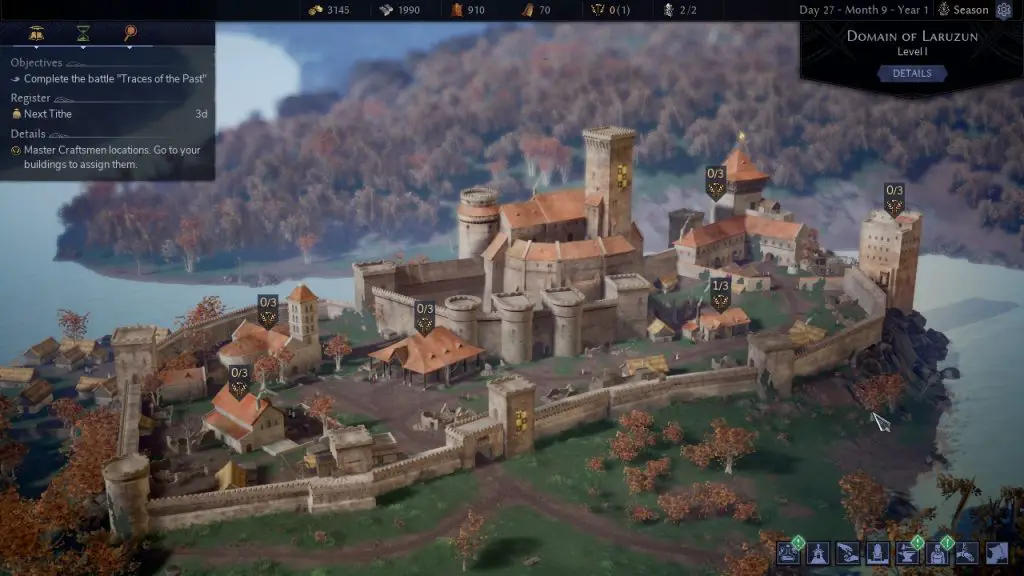
TACTICS
► BATTLEFIELDS may not look pretty to everyone, but they are pleasant enough and have a lived-in feel. A small number of different tilesets provide a little visual and tactical variation. While elevation and cover provide a minimum level of tactical elements to play. Line-of-sight can be blocked for ranged attacks. Meanwhile, a fog of war keeps the players guessing where they could or should move to.
It would have been nice to be able to pick up and use consumables dropped by dead opponents. With no items to collect, the only interactions available are using the impressive set of siege engines. Each has x3 modes of attack, its own attack pattern, and cooldown. Some can be fired in up to three different directions, and when the AI lapses, it can be used on more than one target.
► COMBAT is brutal yet frustrating. Right now unbalanced as it is, it only demonstrates its promise. It gets better once characters have gained 3+ abilities. Even then battlefield decision-making requires the painstaking deliberation akin to puzzle-solving. The use of a one point move/two point action system gives players great flexibility to determine their tactics.
However, damage yields seem overly limp throughout, compounding the attritional feel of combat as the party must gang up on enemies one at a time. Especially when factoring the high number of dodge rolls the enemy is able to make. Enemies having only one attack compensate for this, but by mid-game, this is cancelled out when they receive two, just like the player’s troops.
A lack of healing and regenerative options adds to the unforgiving nature. All this makes critical hits even more vital if they can be maximised through positioning and certain class abilities. There is no undo option, so mistakes are punished by the AI. Since there is no parrying, tanks are not viable. Instead, high reflex classes can try to take advantage to dodge attacks, Something which the AI seems to benefit from more.
Overwatch feels undercooked due to many die-roll misses and the lack of interrupts to stop enemies in their tracks. Tank builds are impractical as putting characters in defensive mode alleviates too little damage. Zones of control at least stop the potential for cheesy tactics. Friendly fire is present but sometimes glitchy. There is no plot armour so killing the wrong target will fail the mission. Being able to man engines of war on battlements is a bonafide highlight. Though only if they hit. The biggest miss has to be the lack of morale system, which could have addressed all the combat imbalances currently in the game.

OPPOSITION
► The ENEMY ROSTER comprises of the same class types the player has at their disposal albeit with different names. The main opposition faction does have abilities that align with the occult, but overall since there are no standout foes, this adds to the sense of overfamiliarity on the battlefield.
► The AI is okay. It sure likes to focus on killing one target, which it can do in a single turn if left unchecked. It was as if there weren’t enough issues already arrayed against the player! This gets worse if the player has the misfortune of having one bad round mid-game. The AI also doesn’t mind hurting its own units with friendly fire. It loves to use cover wherever possible or to sneak out of line-of-sight when it can safely do so.
It only uses overwatch when scripted, never sets itself in defensive stance, but makes fair use of some of its abilities. It has not so far used any siege engines but will go through opponents’ zones of control when it suits its needs.
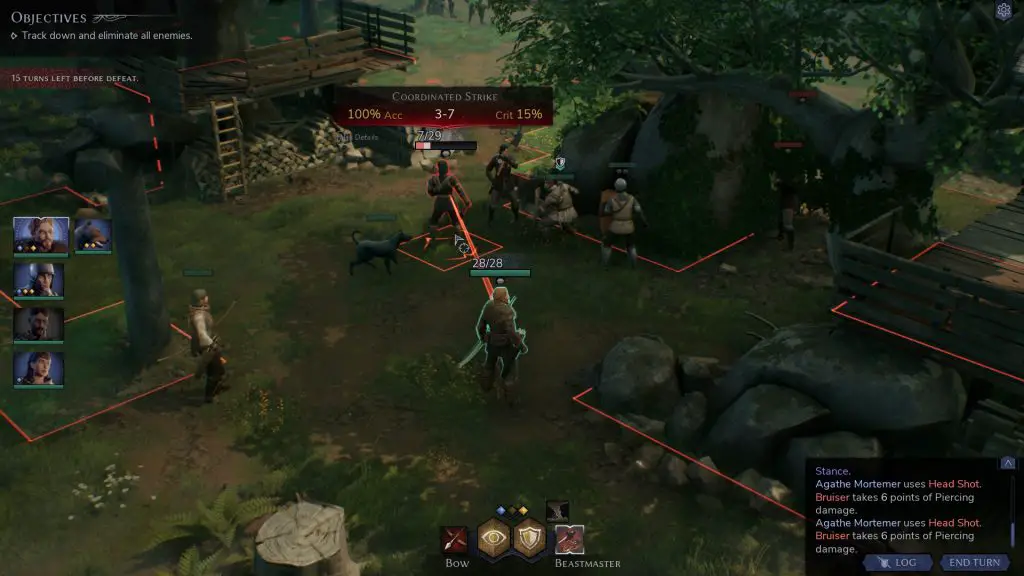
TECHNICAL
► AUDIOVISUALS are decent. Animations are clunky, but perhaps only because of a lack of optimisation (or my opted for framerate.) If anything, the battle engine seems to have chosen more believable detail over sharpness and quality. The artwork used for the HUB and MAP is excellent, though. The voice acting of the main narrator is better than those in cutscenes stating objectives, whose voices lack weight and conviction. Maybe they were not using their native language. The non-DLC soundtrack is reflective of the setting but is easily forgotten. At least battle noises sound realistic.
► The UI is functional but could be better. The lack of hit chance previews when moving to a tile diminishes decision-making. The combat screen needs stronger icons to indicate statuses better. It is impossible to select the final facing of a character about to move, so they end up looking in ludicrous directions. A mini-map of where combatants are may not be realistic, but it would add to the ease of play. Mission previews would be better served with more information on opponents or battlefield types. The chapel screen seems underused and should separately list wounded soldiers as well as those critically injured. Camera control can be done with hotkeys or a mouse, but no onscreen equivalent exists.
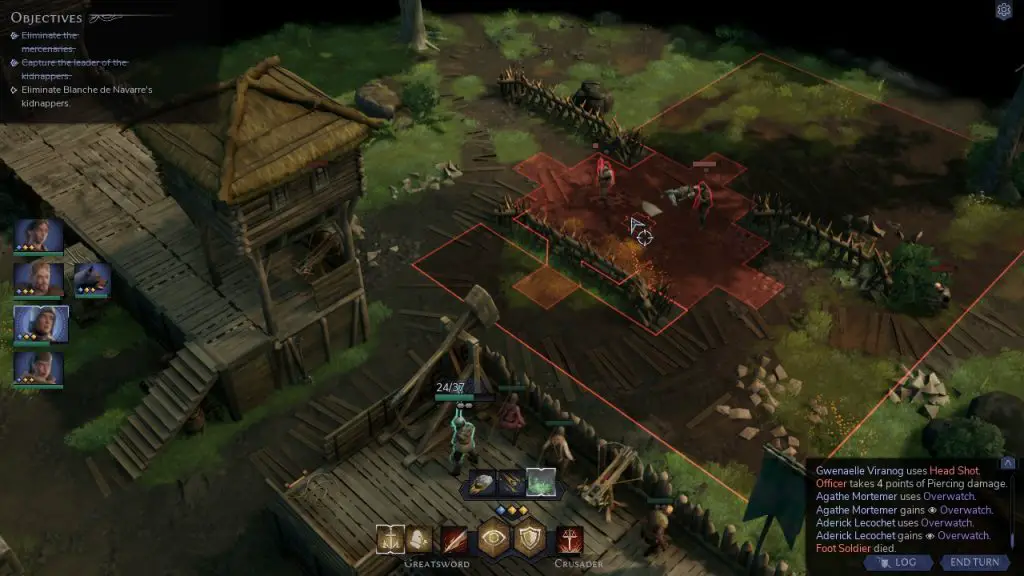
COMPLEXITY
🔶 ACCESSIBILITY – The first act is essentially an unofficial tutorial, but the information offered is on the lean side. Each act thereafter introduces at least one new strategic concept to the campaign, so the learning curve is about right.
🔶 DIFFICULTY – x3 options are available to the player to set their preferred challenge. This review was made using medium. As such, the first act was much tougher than those that followed. Likely due to a lack of consumables and soldiers not possessing enough game-changing abilities. Iron man saving is optional, but once set cannot be changed for that game.
🔶 BALANCE – The first act starts slow, as battles are tougher than they should be for a party without consumables and many combat abilities. Mid-game, the flow of victories becomes easier, but even then, with so many factors arrayed against the player’s forces, the experience can feel like a slog-fest. One that potentially needs the help of save-scumming.
🔶 PACING – The acquisition of upgrades needed versus the amount of filler battles needed to acquire resources is pretty good. Especially as mission requirements are dictated by the level of soldiers and equipment needed to stand a chance of beating them. It is further aided by allowing players to dictate how many and which filler battles to undertake and when.
🔶 SCALING – Strategic elements align with the rate of PACING. Across acts, research and building upgrades must match those required to progress. In between, the player has the leeway and more than enough occasions to achieve what is required to press on.
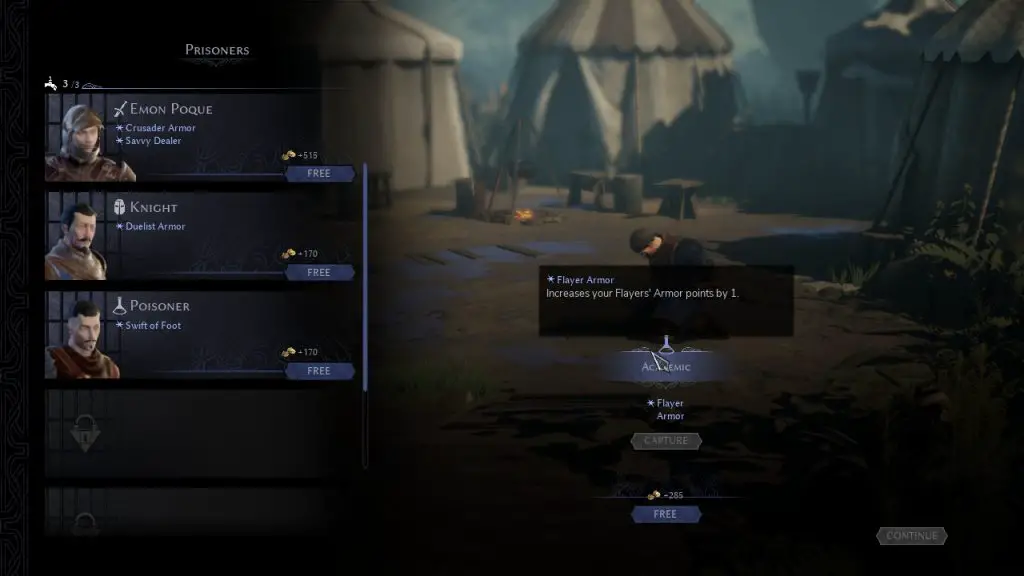
STAYING POWER
🟨 REPLAY VALUE – The story and their associated battles may be scripted, but random battles can make prospective playthroughs different. By then, the player will also be in a position to be more choosey in the classes that compose their army.
🟨 LONGEVITY – There is not much to keep playing beyond 100%ing achievements. For those inclined, the game can be replayed a few times, perhaps once per difficulty. Even now, gameplay promises to be engaging enough to return for more.
PRODUCTION
🟣 QUALITY – With only a few bugs caught during play, the game already has a fair amount of polish. Though other gamers seemed to have experienced more. It could certainly use some QoL on several features. Keys can be remapped.
🟣 STABILITY – No crashes or freezing occurred during play. However, a small number of gamers have reported issues.
🟣 STEAM – Achievements. Cloud saving. Overlay screenshot capture. Mostly compatible controller support.
🟣 OPTIMISATION – The framerate can be limited to between 30 and 120fps or disabled. Due to spec limits the game was played at 30fps. Low-end specs like mine will run loud if they are not used in a lower resolution.
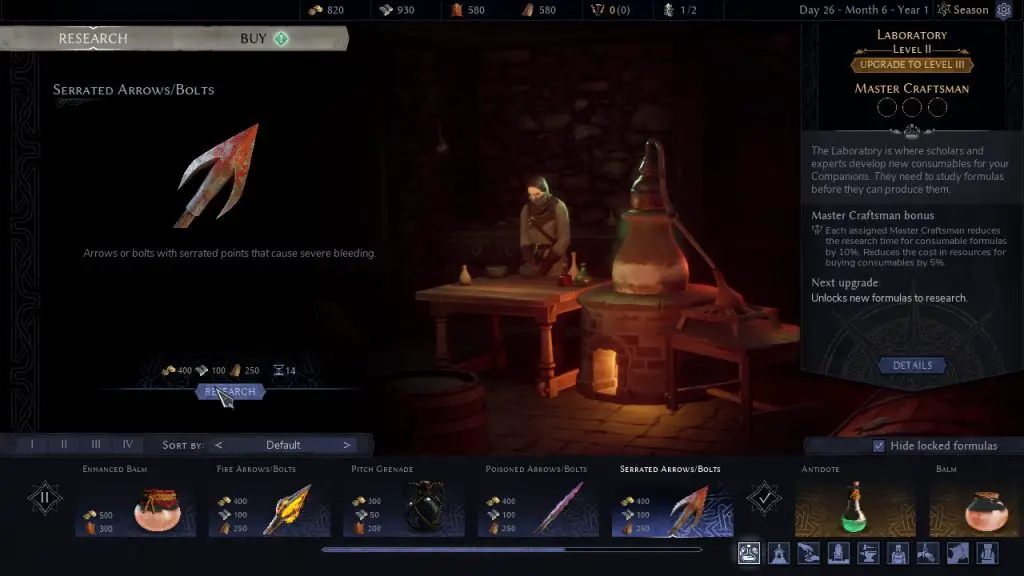
VERDICT
Crown Wars: The Black Prince (CW:TBP) is a playable medieval-themed strategy game that aptly demonstrates the experience it could become with additional balancing and QoL.
It is hampered by an unbalanced campaign that would seem on the short side were it not for the constant availability of filler battles. It is also beset by an unforgiving combat model that makes for a harder challenge than it should be. Despite these, a set of complimentary TBT combat mechanics, plus a streamlined and relevant strategy layer, make good bedfellows. Together, these give the player plenty of leeway to play the game their way.
Right now CW:TBP is something I would MAYBE consider. A few more of the right patches would take it beyond that recommendation.








